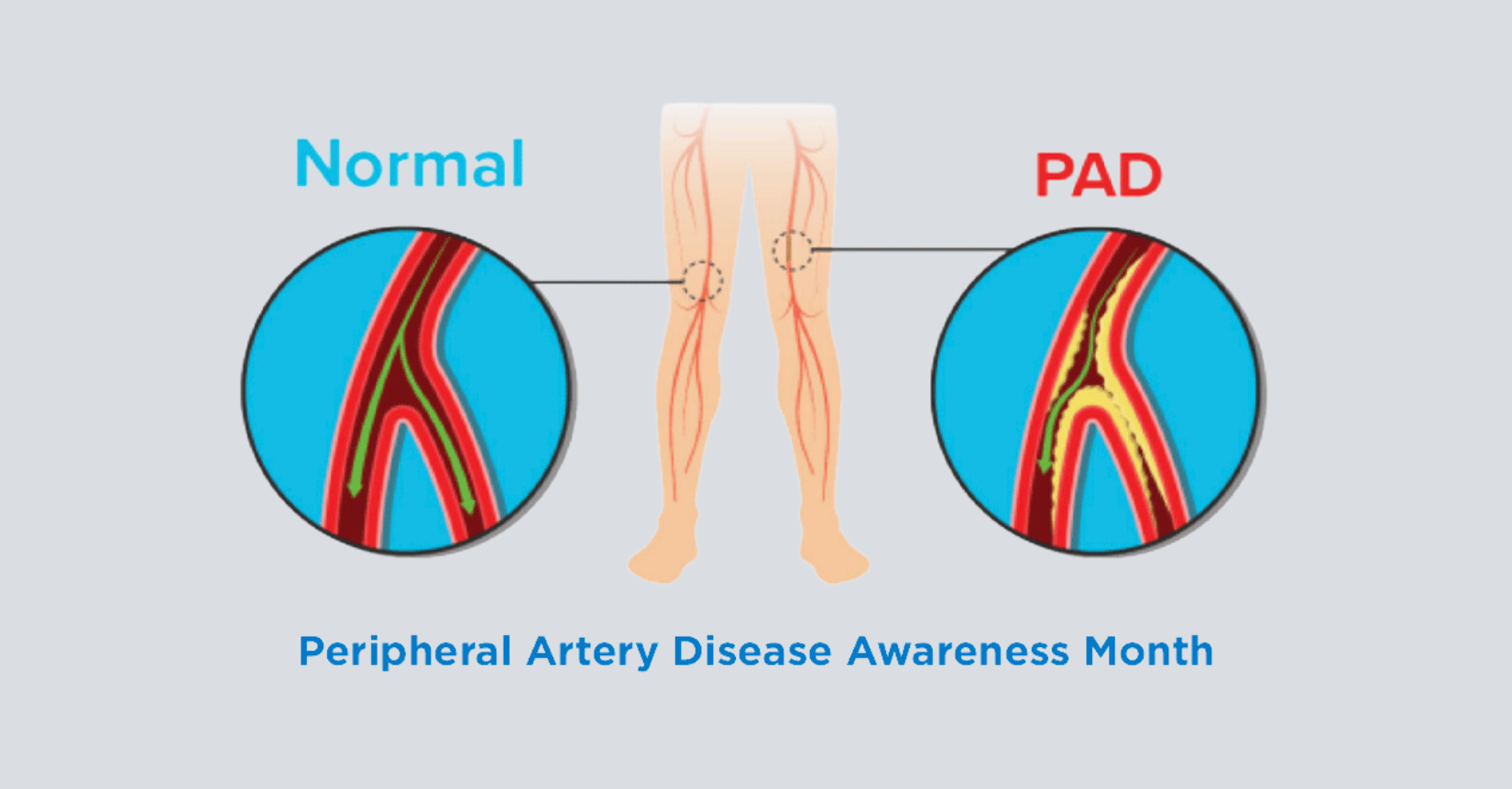Unmasking the Hidden Risks of Peripheral Arterial Disease (PAD)
September 28 2023
OVERVIEW:
• What is PAD
• Top Risk Factors
• Professional Evaluation
In the vast landscape of health concerns that occupy our collective consciousness, some ailments remain shrouded in obscurity, their presence often undetected until they reach a critical stage.
Peripheral Arterial Disease (PAD) stands as one such elusive condition, affecting millions silently and stealthily. It is imperative to unravel the mysteries surrounding this ailment, to comprehend the factors that propel it from a whisper to a roar in the realm of health risks. In this article, we embark on an illuminating journey into the multifaceted risks that entwine themselves with PAD, casting light on the very elements that render it a formidable and often underestimated health concern.

The Unseen Threat of Peripheral Arterial Disease (PAD)
Peripheral Arterial Disease, known simply as PAD, exists as a hidden adversary within the vascular system, weaving a complex narrative beneath the surface. Unlike more prominent health issues that garner attention, detection until it has gained a foothold on an individual’s well-being. To truly grasp the significance of PAD, it is paramount to decipher the intricate web of risks that encompass this condition.
The Top Risk Factor of Peripheral Arterial Disease
Perhaps the most significant and modifiable risk factor for PAD is smoking. Cigarette smoke contains harmful chemicals that damage blood vessels and accelerate the progression of atherosclerosis, the underlying cause of PAD. Smokers are two to four times more likely to develop PAD than non-smokers.
Diabetes: A Dangerous Duo
Diabetes is a major risk factor for PAD. Elevated blood sugar levels can lead to damage and narrowing of the arteries (atherosclerosis) throughout the body, including the peripheral arteries. Individuals with diabetes are at a significantly higher risk of developing PAD and experiencing its complications.

Hypertension: Staining the Arteries
High blood pressure, or hypertension, places excessive strain on arterial walls. Over time, this strain can lead to arterial damage and atherosclerosis, increasing the risk of PAD. Managing blood pressure through lifestyle changes and medication is crucial in mitigating this risk.
Abnormal Blood Lipid Levels: Cholesterol Matters
High levels of LDL cholesterol (often referred to as “bad” cholesterol) and low levels of HDL cholesterol (“good” cholesterol) are associated with a higher risk of atherosclerosis, which is the hallmark of PAD.
Managing cholesterol levels through diet, exercise, and medication can lower this risk.
Age: Growing Vulnerability
While PAD can affect individuals of all ages, the risk increases significantly with age. As we grow older, the cumulative effect of risk factors and the natural aging process can lead to a higher likelihood of developing PAD.
Family History: Genetic Predisposition
Genetics can also play a role in PAD risk. If you have a family history of PAD or atherosclerotic cardiovascular disease, you may be genetically predisposed to developing the condition. Awareness of your family history can prompt early monitoring and preventive measures.
Lifestyle Choices: Sedentary Behavior and Poor Diet
Sedentary lifestyles and unhealthy diets rich in saturated and trans fats can contribute to obesity, high blood pressure, and high cholesterol levels. These factors increase the risk of PAD. Regular physical activity and a heart-healthy diet can help lower this risk.
Other Medical Conditions: Contributing Factors
Certain medical conditions, such as chronic kidney disease, autoimmune diseases, and inflammatory conditions, can exacerbate the risk of PAD. Managing these conditions with the guidance of a healthcare provider is essential.
As we close out Peripheral Arterial Disease awareness month, let’s not forget that PAD often flies under the radar until symptoms become severe. Recognizing and understanding the risks associated with PAD is the first step in preventing its development and complications. Whether it’s addressing modifiable factors like smoking and lifestyle choices or managing chronic conditions like diabetes and hypertension, taking proactive measures to reduce these risks is crucial. By shining a light on these hidden dangers, we can work towards a future where PAD is no longer an overlooked health threat.

If you have symptoms or risk factors involved with Peripheral Arterial Disease, don’t delay. Contact Dr. Malani’s office at (239) 430-3668 (FOOT) or visit www.NaplesPodiatrist.com to schedule an examination.



 Fax: (239) 692-9436
Fax: (239) 692-9436 Tel: 239-430-3668
Tel: 239-430-3668